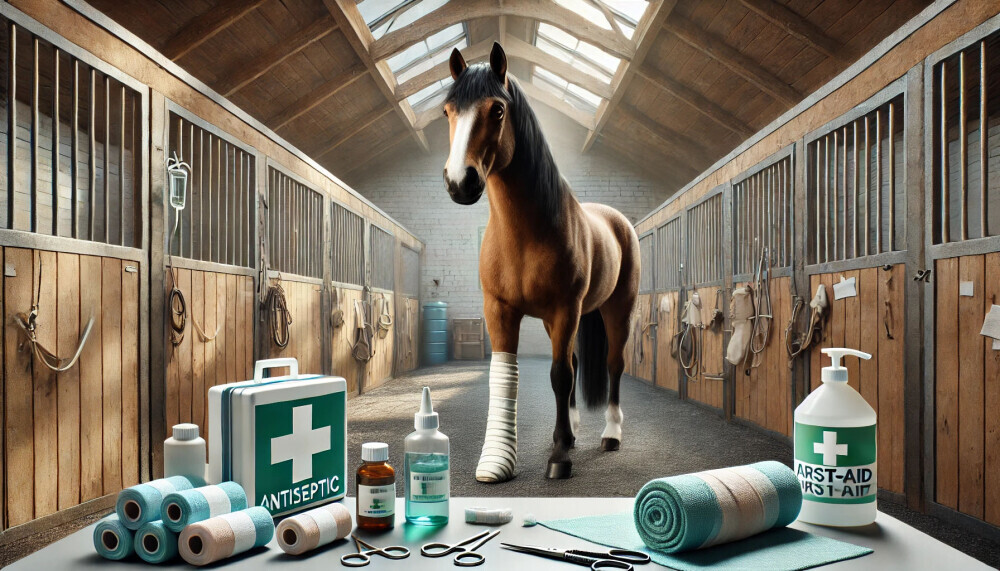
Accidents happen, even with the best care. Knowing what injuries horses commonly face helps in catching issues early and managing them effectively. Here’s a look at typical injuries you might encounter.
First up, leg injuries are a big one. Horses are athletic creatures, and their legs bear the brunt of their activity. Sprains, strains, and fractures are common, especially in performance horses. Watching out for swelling, heat, or any lameness can give you a heads up.
Next on the list are hoof problems. Laminitis, cracks, abscesses – these can cause serious discomfort and even long-term problems if neglected. Keeping an eye out for tenderness, unusual wear, or changes in your horse’s gait can signal hoof issues.
Muscle and joint injuries also make the list. Overexertion, poor footing, or just a slip can result in muscle strains or joint issues. Look out for stiffness, reluctance to move, or swollen areas, and get a vet to check any persistent problems.
Eye injuries are often overlooked until they become serious. Simple things like dust, debris, or minor scrapes can lead to infections or ulcers. Redness, swelling, or excessive tearing are red flags.
Don’t forget skin injuries either. Cuts, scrapes, and bruises are part and parcel of a horse’s life, but untreated wounds can lead to infections. Regularly checking your horse’s body for any signs of injury can prevent minor issues from becoming major problems.
Remember, early diagnosis and treatment can save a lot of trouble down the road. Noticing symptoms like changes in behavior, eating habits, or physical appearance early often makes all the difference.
Preventative Care and Best Practices

Proper nutrition is a fundamental aspect of injury prevention for your horse. A balanced diet rich in essential nutrients supports overall health and strengthens their muscles and bones. Providing high-quality hay, grains, and fresh water should be a priority. Supplements might be necessary too, but always consult a vet before adding new elements to your horse’s diet.
Regular exercise and training are key to maintaining a strong, healthy horse. Consistent workouts help build muscle, improve stamina, and keep joints flexible. However, avoid overworking your horse. Implement a well-rounded routine that includes warm-ups, varied exercises, and cool-downs to minimize injury risk.
Routine veterinary check-ups are a must. Regular vet visits can catch potential problems early before they escalate into serious issues. Annual vaccinations, dental care, and parasite control should be part of your horse’s healthcare regimen. A proactive approach to veterinary care can save your horse from unnecessary pain and complications.
Creating a safe and clean environment is essential for preventing injuries. Ensure the stables and pasture are free from hazards like sharp objects, uneven ground, or toxic plants. Regularly inspect the living area and fix any potential dangers. This can significantly reduce the likelihood of accidents and injuries.
Proper hoof care cannot be overstressed. Regular trimming and shoeing (if necessary) by a professional farrier keep hooves in optimal condition, preventing issues like cracks and infections. Inspect your horse’s hooves daily and clean them to avoid debris build-up that could cause problems.
Training and handling techniques matter a lot too. Familiarize yourself with safe training practices, and always approach handling calmly and confidently. Improper techniques can lead to unnecessary stress or accidents for both you and your horse. Don’t rush training sessions; allow your horse to progress at a comfortable pace.
Emergency Response and Injury Management

Having basic first aid skills for common horse injuries is crucial. Knowing how to clean wounds, apply bandages, and provide immediate care can stabilize your horse until a vet arrives. Keep a well-stocked first aid kit that includes items like antiseptic solutions, bandages, gauze, and scissors.
 When you notice an injury, taking immediate steps can mitigate severe outcomes. Calm your horse – panicking only worsens the situation. Assess the injury carefully, and don’t rush the process. For superficial wounds, clean the area gently with antiseptic and cover it with a sterile bandage. Avoid attempting to treat more complex injuries on your own – that’s a job for the professionals.
When you notice an injury, taking immediate steps can mitigate severe outcomes. Calm your horse – panicking only worsens the situation. Assess the injury carefully, and don’t rush the process. For superficial wounds, clean the area gently with antiseptic and cover it with a sterile bandage. Avoid attempting to treat more complex injuries on your own – that’s a job for the professionals.
Long-term rehabilitation is part of the recovery process. Developing a rehab plan with your vet ensures a structured approach to healing. This may involve restricted movement, physical therapy exercises, or gradual reintroduction to regular activity. Patience and consistency here are key to successful recovery.
Consulting a veterinarian is essential, especially for severe injuries or when in doubt. Vets provide expert diagnosis, treatment plans, and ongoing care advice. Don’t hesitate to reach out even for seemingly minor issues – better safe than sorry.
Recognizing when a specialist is necessary can make all the difference. Some injuries require advanced care that general vets might not provide. Equine orthopedic specialists, for instance, deal with complex bone and joint issues. Knowing who to call in different situations empowers you to make informed decisions.

